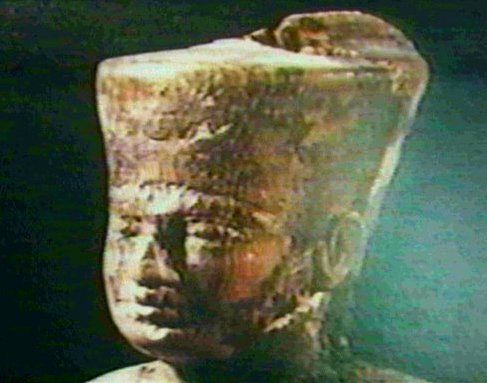
 |  |  |  |
CHAPTER 7
UNSHACKLE YOUR MIND
BLACK PHARAOHS, PYRAMIDS AND ARCHITECTS:
by
John Moore
This is Djoser (Zoser), the Pharaoh who built the first pyramid on the sacred site of Saqqara during the 3rd dynastic period along with the step pyramid that he commissioned. There is no other building that predates this one on earth.


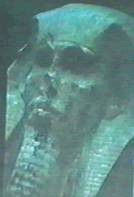
This is Imhotep, the Afrikan artist and architect who designed the pyramid. He is The world's first multi-genius and The Father of Medicine. In fact, Imhotep was a physician 2,000 years before Hippocrates was even born, yet the educational system continues to deceive our children by teaching them that Hippocrates was the first physician.
The Greeks loved his work so much that they imitated him and called their own god Æsculapius in his honour.
For example, every doctor whether White or Black takes The Hippocratic Oath which begins like this, "I swear by Æsculapius....." Æsculapius is the name that the Greeks gave to this Black Afrikan genius, Imhotep.
If additional information related to this is needed, read book two of The History of Herodotus where he discusses the fact that he noticed that the Greeks had collected the names of all their gods and goddesses from Afrika and Asia, but almost all of them came from Afrika. Herodotus was very specific about which ones came from Afrika, and he never claimed antiquity for Greek civilization. Herodotus lived around the 5th century B.C and was an eye witness in Afrika, but not only that, he also gave a physical description of the Egyptians as he saw them, stating that they were Black skinned with woolly hair, broad noses, and big lips. This was Herodotus' physical eye witness account of the Egyptians as late as the 5th century B.C., which is the period that we are most interested in.
This is Pharaoh Snofru (Snefru) from the 4th dynasty, and his sphinx that was found in basement of a Paris museum.
Note that he also had some damage done to his nose as do many of the statues. The more Afrikan they look, the more damage is done to the noses and lips to destroy the Afrikan features.
This is what is believed to be the image of Pharaoh Khufu (right), who built one of the three pyramids. The one on the far side which has the top cut off is a Greek pyramid. As usual the Greeks transposed his name to Cheops.This statue was actually found in what used to be a toilet as someone had actually thrown it away, so it had to be scraped clean. The middle pyramid is Khafre's pyramid, which means soul of Re or soul of God. The Greeks changed his name to Chephren.
The first pyramid belongs to Menkaure, soul of Re (Ra). The Greeks changed his name to Mykerinus (Mycerinus). In other words, the Greeks not only changed the Afrikan names which was a common practice, but by so doing they also deleted some meaning from the names. Each one of these 3 pyramids had a boat pit next to it which is very important because of the date which is 2,700 years B.C. The dimensions are 140 feet long. That boat was found next to the farthest pyramid in the back. Each pyramid had a major boat pit which was only discovered recently. This boat, still looking in pristine condition, was housed outside the pyramid and was useful for sailing up and down the Nile. This indicates that the first fleets of ships came from the Kemetic source.
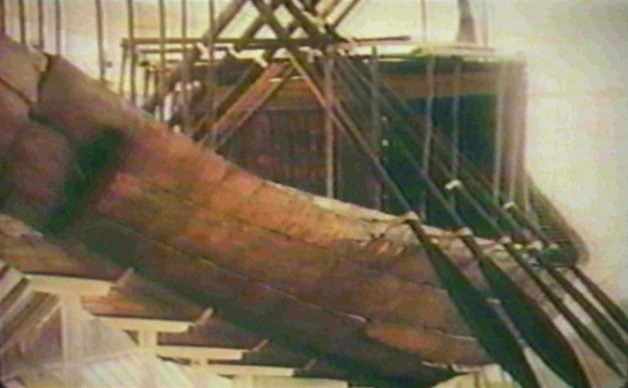

The importance of the boat though is that if this kind of naval technology existed around 2,700 B.C., it means that the Egyptians had the means to go any where they wanted to, and if by chance they did not travel, it was because they had no reason to do so and not because they did not have the technology that allowed them to travel.
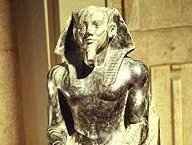
Here are two images of Khafre (Chephren). Look carefully at his physical features and decide for yourself if you think he is a Black person or a white person. Many people think that all Black people have big lips, but if you were to visit a place like Nubia for instance, you will notice that the people there are very dark with a bluish tint, and have very straight, curly, woolly hair. These fit the description of Herodotus but if you go even further south, you will find lighter skinned Afrikans with thinner lips that look more Asiatic, more like the so called Bushmen of South Afrika.
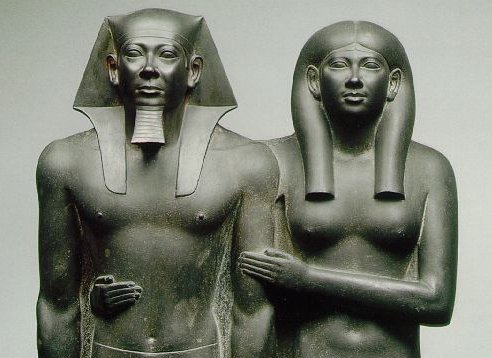
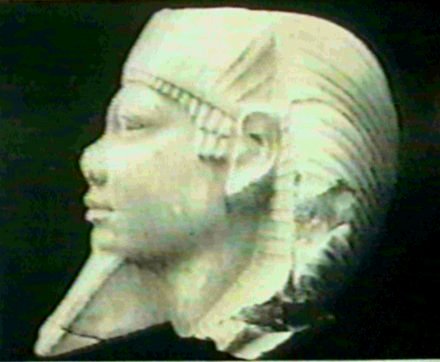
In the first image to the left is a picture of Menkaure of the old kingdom whom the Greeks call Mykerinus. On the right is another image of Menkaure, and if you line them all up in sequence you will get a different impression of what the physical appearance of those Afrikans was like.
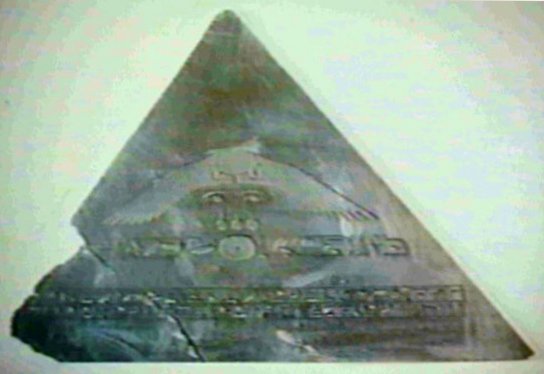
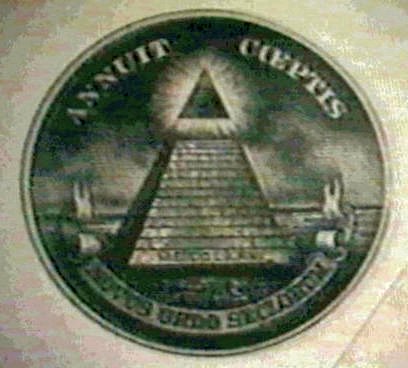
The image on the left shows the peak of a pyramid. This gives the opportunity to point out that the founding fathers of America, who were almost all “Masons”, chose Egyptian images to be used as their symbols such as the one printed on the U.S. dollar bill for example. Look at an American dollar and you will see “the all seeing eye of God or Heru (Horus)” at the top of the dollar bill. Of course this is the thing that the founding fathers loved more than anything else in the world, money, and they used Afrikan symbols on that money.
That symbol has much deeper meanings but only part of it is revealed since not all the meanings are currently known. One of them is the all seeing eye of God which is the son, since it is the right eye. It can be broken down into various pieces if the colour is removed and the parts separated. What is shown is that each part is a hieroglyphic for a fraction, and if all the parts are added together, the sum is 63/64th, with 64 being the common denominator. You do not get a whole as there is a piece missing, and that part is supplied by God since no man is perfect.

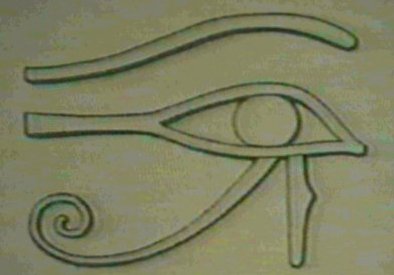
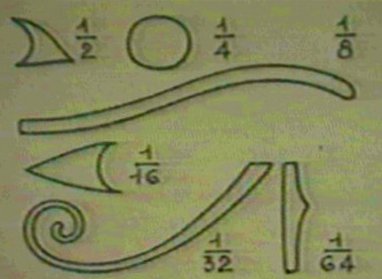
Afrikans wrote on the first paper called the papyrus, though many people believe or teach that they did not have a literate tradition which is absolutely false. Even the word paper comes out of Afrika from the Egyptian papyrus, so they were the first people to write on paper besides using other techniques for conveying messages and information.
Weaving for example is writing, braiding is writing, building houses is writing. In other words, the Afrikan was able to convey symbols and information through many different forms, of which writing was just one.
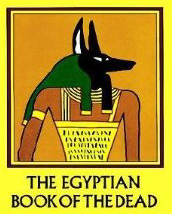
This is inside the tomb of Unas from the 4th dynasty B.C., which would be about 2,700 years before Christ. Inside this tomb are the hieroglyphic writings, but what is important to know is that they are Bible verses.
In other words, this is the oldest Bible in the world commonly referred to as "The Book of the Dead", but to the Kemetic people it was known as "The Book of Coming Forth from Darkness into Light".Again it is clear what happens when people change the meaning of Afrikan works.
The information on the walls of this temple in the Tomb of Unas was recently collected, along with verses from other tombs which form this volume and other books.What is inscribed is of vital importance, because there are articles in the Book of the Dead or The Totem Book, which we can now read that help to explain the religions that emerged much later, such as the Hebrew religion, the Islamic religion, and the Christian religion.
This is Djedefre. Many images of the Pharaohs are being shown as much as possible, because in many instances if any Blacks are shown who are in some way connected to Egypt, the slaves from Nubia who are generally displayed as if to give the impression that the only slaves in Egypt were Nubians when in fact most of the slaves in Egypt at the time if any were Asians.
They are always shown on monuments as slaves but never as kings except during the invading period.

This scribe named Kai is often seen in books related to Egypt and is one of the most famous images that can be found of him. One reason this picture became so famous is because it has light eyes and appears to resemble the hypothesis of European type people who settled Egypt.
In the museum of Paris they go to great lengths to display it right in the middle of the room to ensure it gets a lot of attention.
Even when you go on tours in the Cairo museum the guides will often use a flash light to shine it into the eyes and say "notice the eyes" They do not want anyone to miss the fact that this could have been something that was not an Afrikan.
The same thing happens in America with another famous image that is printed in books about Egypt, so imagine if the books containing these types of images were stacked together; it would certainly lead to a distorted perception of the true status of ancient Afrika. In any case, Egyptians did make room for foreigners, because there was not that kind of prejudice, so people could come in from Europe or Asia and rise up through the Egyptian schools and become knowledgeable, even becoming leaders in the Egyptian government. That was not abnormal, but their physical features would be abnormal if the predominant population was considered.
Keep in mind how this statue is displayed because another image of a Pharaoh from the 12th dynasty will be shown which has been stuck somewhere deep in a corner so that it gets no attention, even though he was the most famous Pharaoh of the 12th dynasty, but worse still, there is not even a name displayed on it.
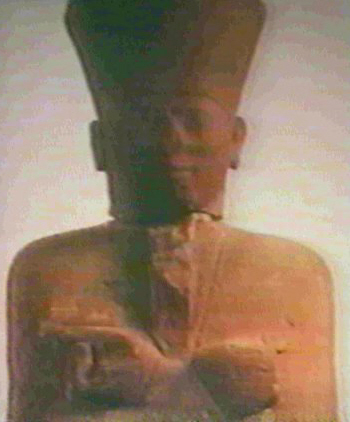
This is Mentuhotep, the one who founded the 11th dynasty. He is usually shown in coal Black. They would get the Blackest Black that could be found to paint Mentuhotep.
Normally you will often hear a whole lot of nonsensical explanations as to why he was made so Black other than the fact that he looked just like the other Nubians around at the time.
Below is a woman from the 11th dynasty getting her hair plait in corn rows.

This is Senwosret II who was one of the kings of the 11th dynasty. Very seldom do you see this picture because it is not so famous. Everyone is allowed to view the scribes and the secretaries, but hardly the Pharaohs. To ensure there can be no doubt concerning his native features, this is a close up to show his lips and mouth, those areas that are generally destroyed to hide the features.
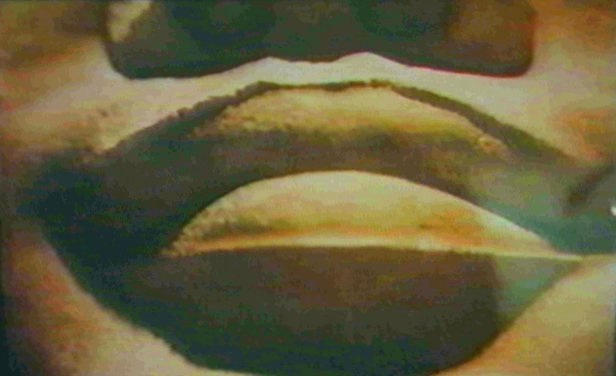
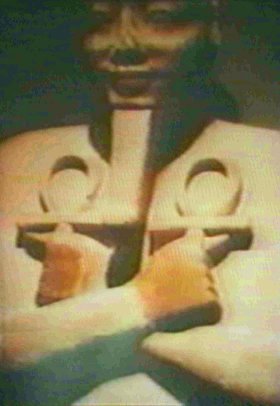
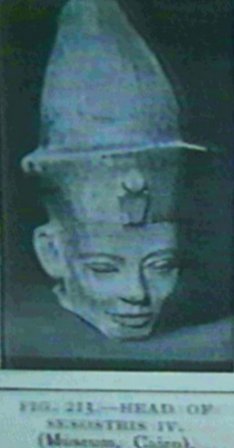
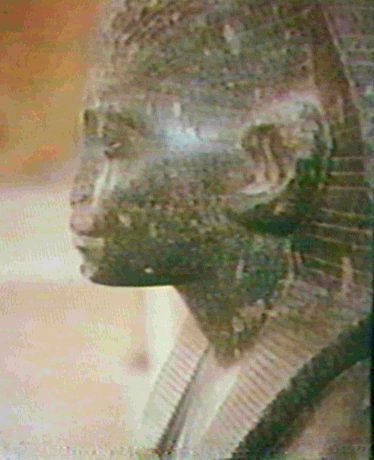
On the right is Senwosret III (Senusret/Sesostris) or Cecrops as the Greeks renamed him, and Senwosret IV on the left.
Senwosret III's throne name was Kheper-ka-re. He was a warrior that established a colony on the Black Sea near Russia, maintaining thousands of African troops from Egypt in that region.Senwosret founded the City of Athen and helped to create the Greek civilization. All the images so far still resemble the features of typical Afrikans who are currently found in the Nile Valley.
Below are more images of a king mentioned earlier that did not have a name attached to it. Remember the scribe or the secretary of the high official who is always shown in the literature because he looks more European in appearance, well here now is the King who was mentioned earlier and is probably the most important king of the 12th dynasty, King Amememhet III. Amememhet means “God goes forth” or “he goes forth in the name of God”.
This is the image of that king with no name attached to it which usually sits in a far corner out of sight in the Cairo museum. No one would even know that he was a king unless the statue was pointed out, and quite obviously he is a Black king. In the middle picture you will notice that Amememhet III looks as though he is wearing Dread Locks.
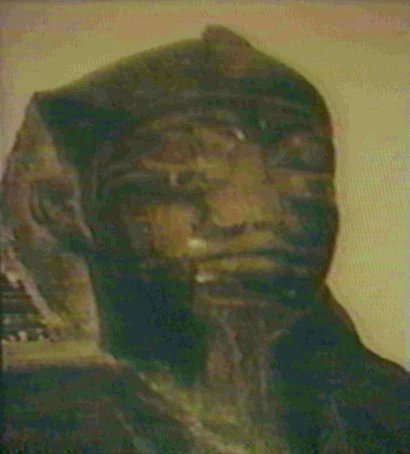
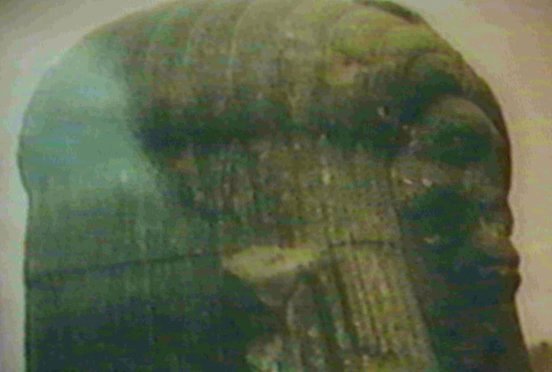
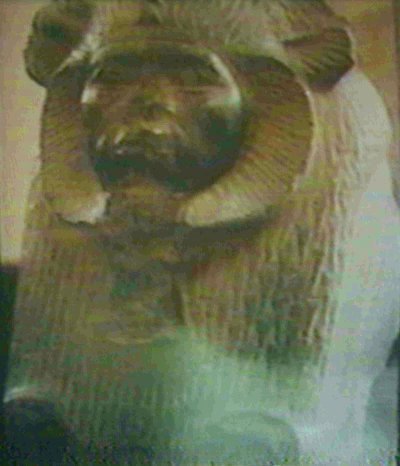
Obviously if you were to display these pictures instead of showing sketches of the pictures, then the children and others will ask questions since in fact they look like the people who still occupy the southern part of Kemet today, the Nubian people.
The question may be raised as to the attitude of the people at the Cairo museum regarding the racial makeup of ancient Egypt. Usually you do not get to see many of the people who work at the Cairo museum except for the guides who the average person comes into contact with.
However, in talking to the director or anyone from the Cairo museum, it will be realized that it does not really seem to matter that much whether the person was Black or white.
The question of race does not come up too often with the people who are presently in control, because it has to do mainly with the current racial makeup of the Egyptian population which is highly mixed, since in one family there can have individuals who are very light and some very dark, so for them the whole racial issue has a different type of meaning.
The people presently living in Egypt are settler populations just like the population of the United States is a settler population. Those Europeans who migrated to the United States are the dominant population in the United States, but you would not connect Europeans to the ancient history of the United States.
In the same manner, the Arabic population arrived after Islam was established during the 7th century, which was after the whole of Egyptian history and even the Greco-Roman element had already been completed.
These people then are what can be referred to as middle easterners, but what must be remembered is that this population was also mixed. In other words, the people of Saudi Arabia, Persia, and Syria already had the benefit of Black Afrikans who had moved out of Afrika and mixed with those populations in both Europe and Asia around the beginning of Kemetic times. So keep in mind that the population of the Middle East was a mixed population. In other words, if an ancient Egyptian were to look at President Mubarak of Egypt he would not consider him to be an Egyptian. In fact, the monuments with those people who had this physical type were always shown as prisoners.
In that 12th dynastic period, the Nubians (Egyptians) built fortresses south of Egypt in Nubia. Here is a sketch of a fortress that was built at Beaulan in the 12th dynasty or around 2,000 B.C.
It has a draw bridge and a motte with water running around it. This type of architecture was already present on the Afrikan continent, in other words, by 2,000 B.C there were “European castles” even before Europe was even in existence.
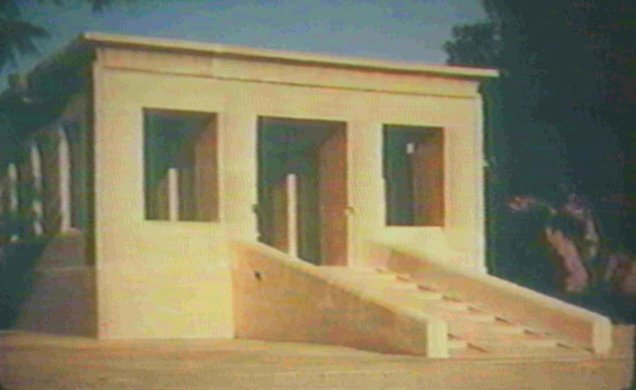
Here is a view of a part of the type of architecture that is currently the centre of one section of the early building at Karnak temple.
This is the White Chapel in the Karnak temple which was the only part that was built during the 12th dynastic period.
Notice here also that the God Ptah which can be seen in the image on the right is Afrikan.
This is the dynastic period before the foreign invasions, in other words, everything presented so far was produced by the efforts of native Black Afrikan Egyptian people. That does not mean that the Asians who came in did not include Blacks among them, because most likely they were a mixed population of Asian and Afrikan. Remember that Afrikans had been going into Asia for thousands of years, so to suggest that those Asians who came into Afrika after those people with physical features showing them to be Afrikan were not Black is not necessarily true, except for a few cases.
If the Rhind and the Moscow mathematical papyri are examined, (obviously not Afrikan names but renamed after those who found the data), material which dates back to this dynastic period is contained in them. This example shows the Pythagorean Theorem but there is a lot more than just that.
In this papyrus there is Trigonometry, Geometry, sines, cosines, tangents, cotangents, secants, cosecants. In fact the whole body of elementary and high school mathematics that is being taught in this day and age were already being learnt and taught in the Nile Valley by at least the 12th dynastic period or even earlier. It means that there was a high tech civilization existing on the banks of the Nile Valley with Afrikans as its teachers. That is why all the Greek scholars went to Afrika to learn their sciences.
For example, Plato went to Afrika and spent 12 years, Pythagoras spent 22 years according to the testimony of the Greeks themselves, and Democritus spent 5 years. Hypocrates spent 20 years studying medicine at the Temple of Waset, thus making him a child of medicine not the “father of medicine”. It was the most typical thing for Greek people to study in Afrika during that era, but no known Greeks had completed the 40 year term of education. It is said that Homer was the first who was supposed to have gone there to observe, but then the Greeks got serious around the 5th dynasty when Thales, and then later Pythagoras, Archimedes and Anaximander went to Afrika for their higher learning. All these Greeks went in droves to Afrika to be taught at the feet of Black Afrikans who passed on all their knowledge to them which the Greeks later claimed to be their own.
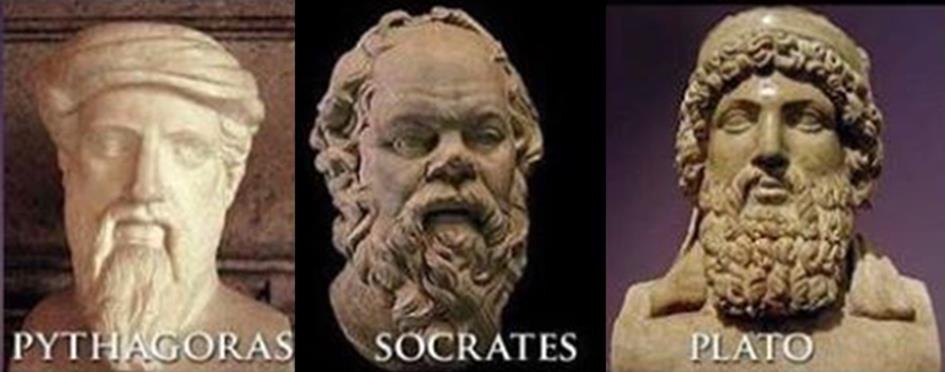
The Afrikans, it must be emphasized, were in the mathematical field long before Kemet (Egypt). If the Ishango bones are analyzed, they show an image on the left accompanied with a sketch on the right which points out what is inscribed on the bones.
It provides the first abacus, not from China, but from somewhere located in Central Afrika in the Congo region. This goes back 8,000 years ago whereas Egypt (Kemet) only goes back about 5,000 years. Some people suggest that the Ishango calculating devices go back even further than 8,000 years. So this is one of the earliest mathematical machines that can be found in human history.
Leaving the 12th dynastic period and moving past the invading dynasty to the end of the 17th dynastic period, only a few mummies will be highlighted since it was not easy to obtain enough pictures. These will not be carvings but the actual corpus delecti, the bodies of some of the royal mummies. One would think that as long as Egypt and Egyptologists have been around that there would be some great picture books filled with mummies, but that is not the case since most of them were destroyed.
This is the mummy of Sekenenre/Seqenenra-(Tao II) who came from the south. Remember that in the 1st dynasty it was Mina who came from the south and unified the two lands that started Kemet (Egypt). Sekenenre /Seqenenra (Tao II) starts the war of liberation from the south. Look at his mummy which shows that he is dark. All the royal mummies are Black, not only dark but dark Black.
When Egyptologists and others first saw these mummies, they dismissed them claiming that because the tone of the mummies was Black did not mean they were Black people. They speculated that the process of embalming or using bitumen might have been responsible for turning the skin Black.
This is what spurred Dr. Cheikh Anta Diop to get up in almost utter exasperation and conduct chemical tests on the skins of the mummies to establish whether or not they were really Black or white people.
To conduct the tests, one chemical was needed, in addition to a 100 watt bulb, and a microscope. The chemical was esobenzoid which could be placed on a little swatch of skin, either the derm or epidermis that is lifted from the mummy, spot the light on it then examine it under the microscope, and if it is a Black person the melanin granules in the skin will become fluorescent and allow you to count them because melanin does not deteriorate over time, and they will be clustered tightly together. If it is not a Black person it will not react in this fashion. Melanin remains present in the fossils of animals, and since it does not deteriorate it is a reliable indicator of the physical type of the person.
Dr. Cheikh Anta Diop was actually allowed to test some of the mummies from the Marietta excavation in Egypt using this melanin dosage test that was outlined and presented in his scientific paper at the Cairo symposium. It was indeed discovered that the mummies were all from Black people. Immediately afterwards, Dr. Diop was denied permission to do any further tests on the mummies, and right after he had announced his method of determining whether the mummies were Black or white, the mummies mysteriously disappeared from the Cairo museum and are now located somewhere in the basement.
So if by chance you visit the Cairo museum you will no longer see any mummies from the old or new kingdom, and if you do see any they will be the Greco-Roman mummies since those fit the type that coincides with the story that has been falsely spread that the ancient Egyptians were white people.
During this period the Asians came in and destroyed everything in place while not making any contributions whatsoever, because there is nothing left of the Asian invasion to indicate their presence other than a few monuments and some coins. Sekenenre /Seqenenra (Tao II) provided the first glimpse of a royal mummy that came from the south in the 17th dynasty which clearly was a Black person. This leads into the dynasty of King Tut, Akhenaten and others.
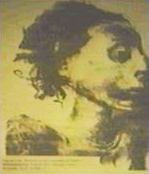
The left image shows a high priestess of Amon. The right image shows a mummy still with corn rows in her hair which is a very typical Afrikan style.
There are many mummies like this but if you visit the Cairo museum you will not see them at all because they have been removed and hidden from view.

On the left is the God Amon (Amen/Amun) from the 18th dynasty who came from the south. On the right is one of the first queens of the 18th dynasty, not Nefertiti but Ahmose Nefretiry the wife of Ahmose.
Most people are inclined to have her gravitate towards Nefertiti because the necklaces and jewellery look like those worn by her. Ahmose Nefretiry was an important queen who was always portrayed as a Black Woman, but beyond that, she was one of the Great Royal Queens of ancient Egypt.
There were at least seven Cleopatras but the one that most people talk about when they mention this queen is Cleopatra VII from the 30th or last dynastic period. Cleopatra lived like an Egyptian, worshipped like an Egyptian, and spoke Egyptian, so for those reasons it is believed that she might have been Egyptian which could also mean that she might have been Black, but this is not definitely known. There are some coins that purport to have her image on them but it is not known when they were minted or by whom, so the question remains an open issue, but in any case, she was not one of the important queens.
This is Karnak Temple the Arab name, known as the city of a hundred gates, or the temple of Ipet-Isut which the ancient Egyptians called it. It was dedicated to Amon and was located in the ancient city of Waset which the Greeks called Thebes. It was the World's First Great University and the centre of the Egyptian Mystery System that began during the middle kingdom at a time when there was no Greece, no Rome or any European western civilization in existence.
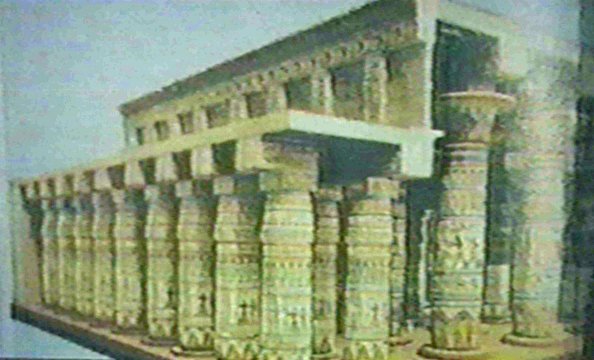
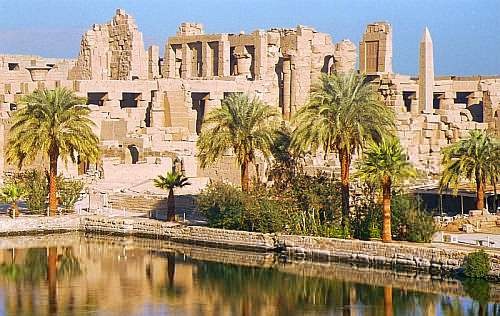
In the temple image are a number of obelisks or Tekhenu which were removed from ancient Waset and carried off to Europe. They can now be seen in places such as St. Peter’s Square, in the back of a Museum in New York City, and even as a replica known as the George Washington Monument.
The water at the front shows where the world’s first baptisms took place. Neophytes spent about 40 years learning the Khem-mysteries before being initiated as Kher Heb priests through baptism. This is an example of a priest whose heads were shaved bald.
These priests of great wisdom were the instructors in the schools and had the ability to foretell the future, from which we got the concept of prophecy.
Hundreds of years later, the Greeks, including Pythagoras went in droves to this great university where he studied the Pythagorean Theorem and the Pie which the world was later deceived into believing were discovered by Pythagoras and the western world.The records indicated that at one point in time there were about 80,000 students that matriculated at this university. Some of those students from ancient Greece who were educated in Kemet at Afrika’s famous Kemetic (Egyptian) temple-universities in Ipet Isut, which was re-named Karnak and Luxor by the Arabs, and Thebes by the Greeks were: Thales (the so-called father of philosophy), Hippocrates (the so-called father of medicine), Pythagoras (the so-called father of mathematics). Other noted Greeks included Socrates, Plato, Aristotle, and Democritus.
Since it took 40 years to matriculate through the system, it is clear that neither Plato, Socrates, nor Aristotle graduated from that school, so they fabricated and agreed on all their theories.
Moses had completed his 40 years as an initiate in the Egyptian hidden religious system and was therefore schooled in all the ways of the Egyptians before graduating from one of the six orders of the Egyptian Priesthood. (Acts 7:22).
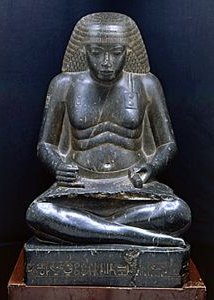
Here is the designer of the Karnak temple. We are now beginning to see Black people as architects, but more importantly in this case as the architect of one of the most famous structures in the Nile Valley. He is Amenhotep son of Hapu who rose from a lowly beginning, a low socio-economic status and became the chief priest of the temple and by extension the chief designer of the canon or rule by which the temple would be built and expanded.
© John Moore - Barbados, W.I. (March 2000) ©. All rights reserved.
